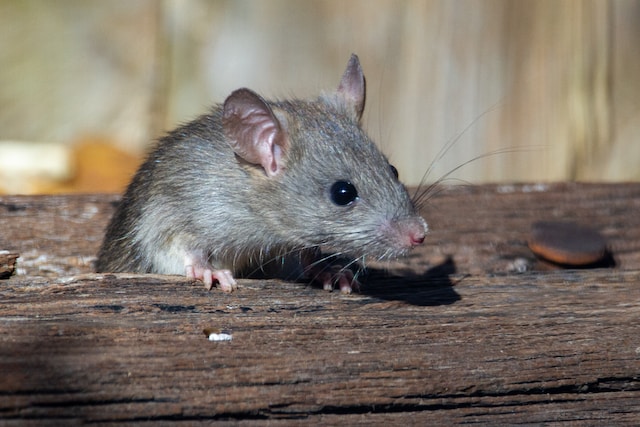According to Benjamin Franklin, taking measures to prevent mice is more effective than trying to control them once they’ve invaded your space.
Cheese-flavored baits are popular with mice, but a successful treatment plan also involves eliminating their food sources and reducing shelters.
Exclusion
Getting rid of mice requires more than just a trap. Mice carry more than five diseases that can be transmitted to people, and their droppings can damage food and property.
Most mice infestations begin in cool, dark places like the backs of pantries, cupboards, attics, and crawl spaces. They search for tiny openings that they can squeeze through, such as the size of an eraser cap point.
Sealing these cracks and holes can help deter mice. In addition, removing potential food and water sources inside and outside the house, including bird baths and pet bowls, can also make your home less attractive to rodents. Also, store grains, pet food, and dry goods in metal or glass containers that mice cannot chew through.
Traps
Sanitation and rodent-proofing methods help prevent mice from entering homes, but population reduction with traps and toxicants is necessary once an infestation occurs.
Snap traps are the most common mouse traps and are easy to use. They have one trigger bar that snaps over a rodent when triggered. Glue traps are another option for mice control, but they’re inhumane (mice die slowly from starvation and thirst while stuck to the glue) and can be hazardous for children and pets.
Exterminators specializing in mouse control Winter Park FL, also employ bait stations, which are tamper-proof canisters with poison inside. They place these containers around a property to prevent mice from getting inside and help eradicate large internal infestations. Bait stations must be regularly maintained with fresh anticoagulant bait to keep rodent populations low.
Bait
Although cracks and crevices may appear too small for mice to squeeze through, these pests can enter homes via the smallest passageways. Getting on hands and knees to inspect for entry points can reveal their hiding spots and let you seal them.
Mouse traps can be effective if the bait is placed in them that mice will find appealing. Snap traps are popular and quick to kill rodents, but others are also available. The key is to use traps that won’t hurt or kill pets and children if they come in contact with them.
Mouse poisons are also an option for controlling populations, but they must be kept away from children and pets. Anticoagulant poisons block blood clotting in rodents, but they can be messy and complicated to use. Permanent bait stations can be helpful for control when they are regularly maintained with fresh anticoagulant bait.
Pesticides
In severe cases, pest control professionals may recommend fumigation to kill mice and their eggs when other methods fail. Because this treatment uses many toxic chemicals and requires you to leave your home during the process, pest control pros use it only as a last resort.
Mice destroy cartons, paper, boxes, and plastics to construct their nests, and their urine and feces can carry dangerous bacteria like salmonella and hantavirus. Effective rodent control includes sanitation, rodent-proof construction, and population reduction with traps and poison baits.
Most rodenticides are formulated as baits that can be delivered in pellet or block form. The most common are first-generation anticoagulants that work by disrupting the blood’s ability to clot. Other rodenticides are non-anticoagulants such as bromethalin and zinc phosphide that kill in other ways.
Repellents
If you can’t get rid of mice using at-home extermination techniques, professional repellents can help. Repellents are formulated with plants and other natural standards and are safer for children, pets, and non-target species than traditional pesticides.
Look for clues that suggest mouse activity: droppings, chew marks on food packaging, gnawed wood support beams or rafters, and electrical wires that have been chewed through. Keeping trash cans covered and sanitized and not storing pet food or other attractants in the garage can also make your home less of an inviting mouse habitat.
Indoors, use snap traps or glue boards to capture mice. Bromethalin or cholecalciferol work well in ready-to-use baits because they’re slow-acting, eliminating bait-shyness and ensuring that mice receive lethal doses. Place bait stations outdoors in tamper-proof containers to prevent kids, pets, and wildlife from accessing the toxic bait.



